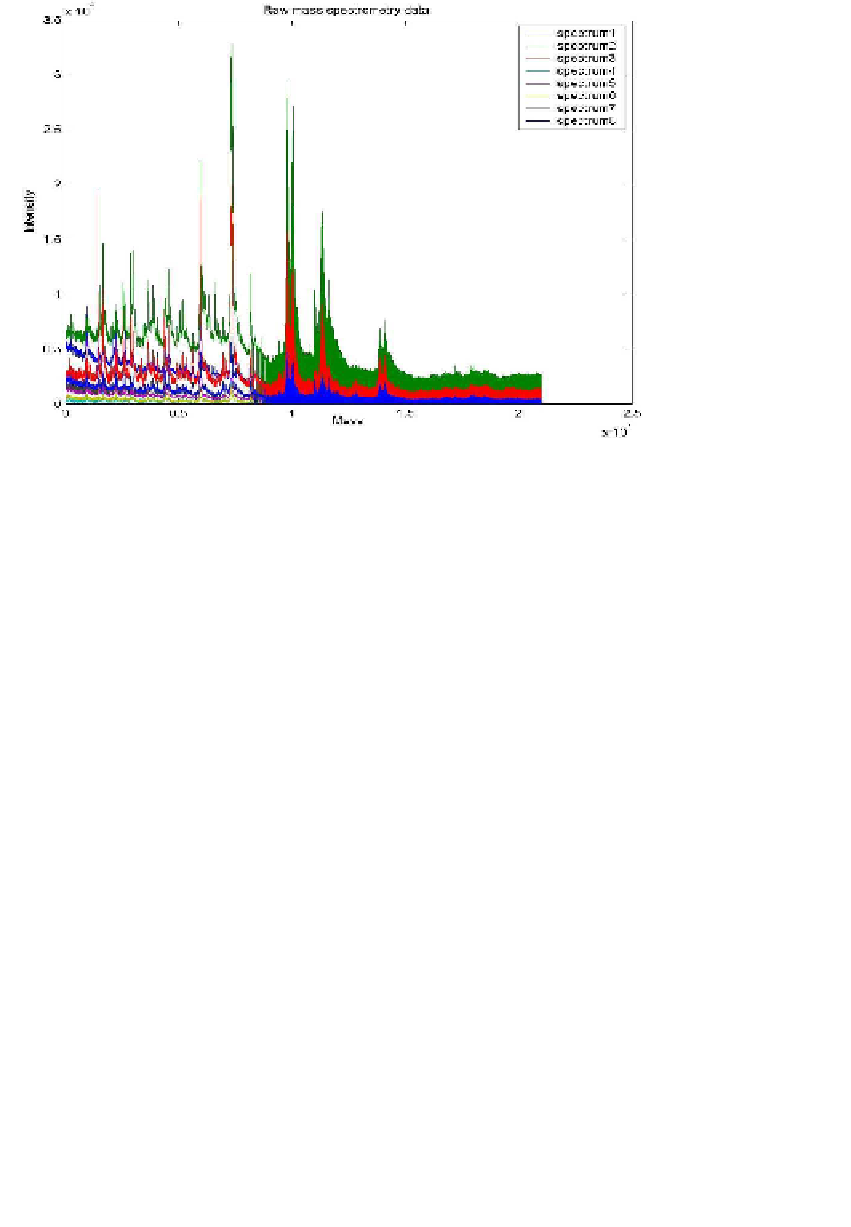Biomedical Engineering Reference
In-Depth Information
Fig. 1.
Raw Data Sets of MALDI-TOF MS.
systems employing uniform electric elds is presented in [29], which allows
\exact" calculations of ight times as functions of mass-to-charge ratio,
initial velocity and position, applied voltages, and instrument geometry.
The whole mathematical processing procedure of MS signals can be
roughly divided into two steps. First, in the \preprocessing" step, we at-
tempt to recover from the time of arrival data, as accurately as possible,
the \true" signal reecting the mass/charge distribution of the ions origi-
nating from the sample. The preprocessing step includes registration, de-
noising, baseline correction, and deconvolution. In the preprocessing step,
these operations are performed independently of any biological information
one seeks to extract from the data. The second type of processing attempts
to represent the data in a form that facilitates the extraction of biologi-
cal information. This step involves operations such as dimension reduction,
feature selection, clustering, and pattern recognition for classication. Re-
cently, many eorts have been put into preprocessing of proteomic MS
data using mathematical tools
2;15;25
, statistical techniques
3;7;31;32
, as well
as computing skills and machine learning methods
4;10;30
.
In the following, we focus on the preprocessing phase using mathemat-
ical tools such as wavelets and a new developed peak alignment method,
namely the projecting spectrum binning (PSB).








Search WWH ::

Custom Search